There is a great debate of which is better for Digital Advertising. A traditional website, or a landing page?
We seek to answer this question for you. In short, the answer is both. Both a website and landing page are critical elements for advertising success. You cannot have one or the other, it is best to have both so visitors turn to leads and sales. However, the question remains, what are the roles of both?
In the era of Clickfunnels where landing pages are seen as the primary moneymaker, let us understand why this type of design elicits people to take up an offer.
Table of Contents
What is a landing page?
This is literally means the page you land on when you come in from an ad. It can even mean a home page. However, typically a page like this is laser targeted, has a form or shopping cart, it highlights one product or service. Here is an example of one of our landing pages Facebook Ads and Google Ads. Here is a snapshot of one of our pages below:

You can see that there are no distractions. There is a single focus of the page, and that is the desired action. It is focused on conversion, which is the desired objective of the advertisement. You can see why it is favoured by both Paid Search and Social Media Professionals. A page of this kind, or a few strung together, can be a kind of microsite. Usually there is no top navigation or footer in this type of page. There usually is a “Call-To-Action” or CTA to elicit the desired result.
You should always funnel traffic from Digital Advertising to these as a policy because they convert into leads and sales easily. However, it is not so easy to get customers and clients. As you will see, a website is still needed to create trust before users become a lead or sale. Things are not so simple.
What is a website?
A website consists of a home page and subsidiary and complementary pages, just like Marketlytics . Google loves websites because they contain a wealth of information for the visitor. A good home page consists of these elements:
- Desired outcome
- Jobs to be done
- Trust building factors
- Who is it for
- How it works
There is no landing page that can replace this. A home page is still desired by many people because its purpose is to answer questions on what products or services are on offer, how to make sense of it and why that product or service is even needed. Every serious brand online needs a home page. A website is designed to build trust. It explains the features of the product/service.
Think carefully. What do most of you do when you visit a landing page? Do you necessarily buy right away? Sometimes, yes. But most of the time you check out the company website to see if it is legitimate or not! Every business needs a website and landing pages, not one in exclusion to another! Visitors need specific messaging, but they also need options to determine the legitimacy of your business! This is not like a local store where you can visit and see it is real. Converting a prospect is not easy. There are a lot of online scams out there, and people are more cautious and discerning than ever.
Think about content marketing. Can you do this at its fullest without a website? Are you going to create unique pages for every blog you write? No! The goal of a website is trust. Conversely, a landing page is meant to help your campaign bring in conversions.
How do landing pages and websites work together?
Your campaigns are best served when they are integrated together. When you have a home page, a blog/newsroom, you can have certain pages set up to achieve your desired objective, even if it is email collection. The advantage of having a website, especially for Google Ads, is that the keywords you use for targeting will have a lot of options to send people to offers. If you know about a Quality Score, not all pages will rank the same on Google and will affect the price of a keyword and effectiveness of the advertising. Google Ads needs a good website. No question about it. Having the top menu and footer taken off a landing page depends on a number of factors and consideration, including the kind of attention you intend to get. Creating a website in this integrated manner is superior to having one or the other. That is the solution to the conundrum, you must have both in order to target effectively and do a good job of reaching your advertising goals.
Conclusion
We hope this provides a good overview of the role of a landing page and website. They work hand in hand, not in opposition. You need both. Links between a website and landing page are to be used on a case by case basis, websites are a good place to hold legal documents for your business. When you provide enough information to elicit interest, build trust and brand awareness, you will get your leads and sales. Whether you just started your business online or are established, we offer Digital Marketing for most needs. Do you need advertising for your website?
All discovery calls are confidential
FAQ
What is a landing page?
A landing page is a sales page intended to elicit an action, such as a sale, email collection or lead collection
What is a website?
A website in this case is a website in a typical sense, with a home page, subsidiary pages and blog/newsroom
Which is better for advertising? Website or landing page?
Both. A website builds trust, a landing page elicits action
How should a website and landing page work together?
A landing page or pages should be sections of a website rather than standalone. Whether they should link to one another depends on the campaign.

Clarence Ling is the Founder of Marketlytics, and a guerilla marketer. Initially a trained Lawyer and Practice Development Manager, he contributed to the growth of his firm, including implementing software.
Clarence Ling is a Digital Advertising and Analytics Expert. Having a wide range of advertising experience ranging from international real estate, to legal and previously worked in full service marketing agencies, Clarence is a diligent marketer with an eye for detail and a talent for numbers.
Clarence can carefully plan out the best budget levels for the desired outcomes with projections that are more accurate than most.
His background in Analytics enables a clear, big picture assessment of both organic and paid campaigns, enabling maximum efficiency of those digital campaigns. His analytical background brings precise clarity of client or customer interaction and behaviour on online assets.
Clarence’s four fields of practice are Search Engine Marketing (SEM), Search Engine Optimisation (SEO), Social Media Marketing (SMM) and Email Marketing (EDM). He is best as an Advertiser and is an avid collector of Software As A Service (SaaS) Products, avidly investing in both technology and human capital of Marketlytics.


Leave a Reply